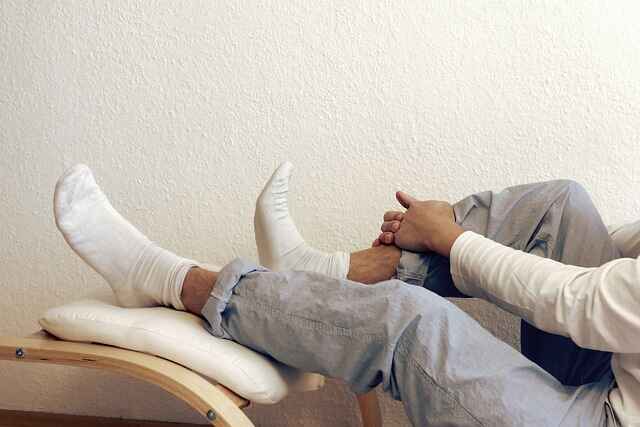What is Restless Leg Syndrome RLS?
Restless leg syndrome is a condition that causes an uncontrollable urge to move the legs, usually due to discomfort. It usually happens in the evening or at night when you are sitting or lying down. Movement temporarily relieves discomfort.
RLS, also known as Willis-Ekbom disease, can start at any age and generally gets worse as you get older. It can disrupt sleep, which interferes with daily activities.
Simple self-care steps and lifestyle changes can help relieve symptoms. Medications also help many people with RLS. (Source)
Also Read: Understanding Diabetes: What is Diabetes? Types, Causes, Symptoms, Management
Symptoms OF RLS:
The main symptom is the urge to move the legs. Common accompanying features of RLS include:
- Feelings that start in peace: The sensation usually starts after you have been lying down or sitting for a long time, such as in a car, plane, or movie theater.
- Relief with movement: The sensation of RLS decreases with movement such as stretching, swinging the legs, pacing, or walking.
- Worsening of symptoms in the evening. Symptoms appear mainly at night.
People usually describe RLS symptoms as a compulsive, uncomfortable feeling in the legs or feet. They are usually located on both sides of the body. Less often, sensations affect the arms.
Sensations that generally occur in the limb rather than the skin are described as crawling, creeping, pulling, painful or itchy.
Sometimes it’s hard to explain the feelings. People with RLS do not usually describe the condition as muscle spasms or numbness. However, they consistently describe a desire to move their legs.

Causes:
The cause of RLS is often unknown. Scientists believe the condition may be caused by an imbalance in the brain’s chemical dopamine, which sends messages to control muscle movement.
- Heredity: Sometimes RLS runs in families, especially if the condition starts before the age of 40.
- Pregnancy: Pregnancy or hormonal changes can temporarily worsen RLS signs and symptoms. Some women get RLS for the first time during pregnancy, especially in the last trimester. However, the symptoms usually disappear after delivery.
Risk factors:
RLS is usually not related to a serious underlying medical problem. However, it is sometimes accompanied by other conditions, such as:
- Iron deficiency. Even without anemia, iron deficiency can cause or worsen RLS. If you have a history of stomach or intestinal bleeding, have heavy periods, or donate blood repeatedly, you may be iron deficient.
- Kidney failure. If you have kidney failure, you may also be iron deficient, often with anemia. When the kidneys are not working properly, iron stores in the blood can become low. These and other changes in body chemistry can cause or worsen RLS.
Although RLS does not lead to other serious conditions, symptoms can range from barely bothersome to incapacitating. Many people with RLS have trouble falling asleep or staying asleep.
Also Read: Obstructive Sleep Apnea: Symptoms, Causes, Prevention, and Treatment
Facts:
- It can develop at any age, even in childhood. The condition becomes more common with age and is more common in women than men.
- People who have Parkinson’s disease and take certain medications called dopaminergic agonists have an increased risk of developing RLS.
Treatment:
Severe RLS can cause significant impairment in quality of life and can result in depression. Insomnia can lead to excessive daytime sleepiness, but RLS can interfere with napping.
Sometimes treating the underlying condition, such as iron deficiency, greatly relieves RLS symptoms. Correction of iron deficiency may involve the administration of iron supplements orally or intravenously. However, take iron supplements only under medical supervision and after your provider checks your blood iron levels.
If you have RLS without an associated condition, treatment focuses on lifestyle changes. If these are not effective, your provider may prescribe medication.
Several prescription medications are available to reduce restless legs syndrome, most of which were developed to treat other conditions. These include drugs that increase dopamine in the brain. These drugs affect levels of the chemical messenger dopamine in the brain.
Prevention:
- Try baths and massages. Soaking in a warm bath and massaging your feet can relax your muscles.
- Apply warm or cold packs frequently.
- Establish good sleep hygiene and a healthy lifestyle.
- Consider using a leg wrap or vibration mat.

Home remedies for Restless Leg Syndrome:
- Massage your feet each night.
- Take a hot bath in the evening.
- Avoid doing activities that distract your mind, such as reading or watching television.
Also Read: Effective Home Remedies For Knee Joint Pain





